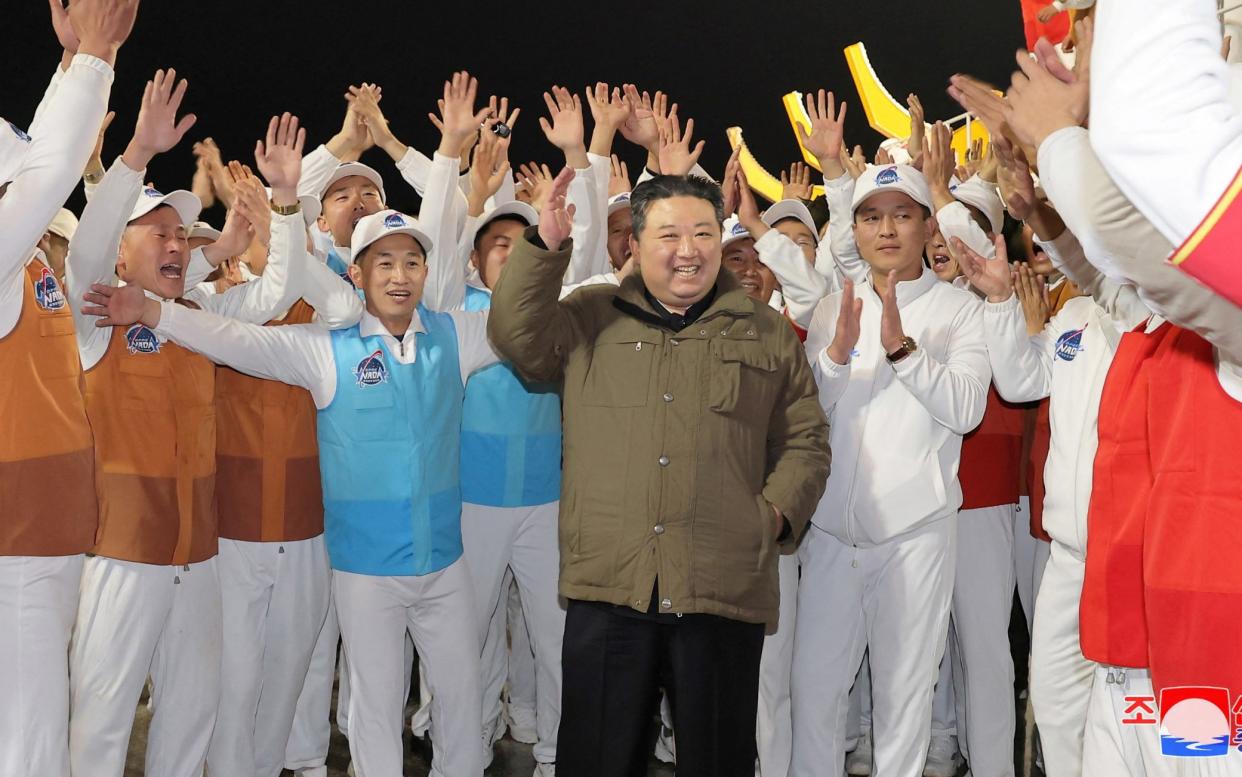Second North Korean nuclear reactor appears to be operational, UN warns

- Oops!Something went wrong.Please try again later.
- Oops!Something went wrong.Please try again later.
A second North Korean nuclear reactor may have reached “criticality”, the world’s atomic watchdog has warned, amid rising concerns it could be used to produce weapons-grade fuel.
The UN’s International Atomic Energy Agency (IAEA) has observed increased activity and a strong water outflow from the light water reactor’s cooling system since mid-October.
The developments indicate the reactor at North Korea’s Yongbyon nuclear complex (LWR), the reclusive state’s main facility of its kind, is operational and has become a second potential source of plutonium for its nuclear warheads.
Rafael Mariano Grossi, the IAEA director-general, said the discharge of warm water is “indicative the reactor has reached criticality”, meaning its nuclear chain reaction is self-sustaining
But he added the agency could not confirm its operational status without direct access.
IAEA inspectors were expelled from North Korea in 2009, and it now mainly uses satellite imagery to monitor developments there.
“The LWR, like any nuclear reactor, can produce plutonium in its irradiated fuel, which can be separated during reprocessing, so this is a cause for concern,” Mr Grossi wrote in a statement last week.
‘Unlawful nuclear and ballistic missile programs’
Observers noted that North Korea could adapt a light water reactor to produce large amounts of plutonium, a major ingredient used in producing nuclear weapons.
Pyongyang has for years used spent fuel from a five-megawatt nuclear reactor at Yongbyon to produce plutonium for its nuclear arsenal.
The US said it was alarmed over what appeared to be another reactor coming online, in violation of UN Security Council resolutions.
“Without IAEA monitoring and assistance, significant risks extend to the DPRK [Democratic People’s Republic of Korea], the region, and the global nuclear industry,” the US mission to international organisations in Vienna said over the weekend.
“The DPRK’s unlawful nuclear and ballistic missile programs continue to pose a grave threat to international peace & security.”
In an April report, the Washington D.C.-based Institute for Science and International Security estimated the light-water reactor “could allow a surge in plutonium quantities at an estimated rate of about 20 kilograms of plutonium per year, a rate four to five times larger than that of the small adjacent reactor”.
Failed negotiations with the US
That study concluded North Korea may have anywhere from 31 to 96 nuclear warheads, depending on the types of devices being built and which fuel is being used.
News of the reactor’s operation comes as North Korean leader Kim Jong Un said an intercontinental ballistic missile (ICBM) test this week showed his country would not hesitate to launch a nuclear attack if an enemy provokes it with strategic weapons.
North Korea has conducted six nuclear tests; the last one was in 2017.
Activity at North Korea’s nuclear test site at Punggye-ri has led to months of speculation that it could resume nuclear weapon testing as it seeks to miniaturise warheads for use in ballistic missiles.
Kim has pledged to enlarge the country’s nuclear weapons arsenal following failed negotiations with the United States in 2019.
In 2021, days before president Joe Biden took office, he ordered the “exponential” growth of North Korea’s nuclear program, calling the US his “biggest enemy.”
